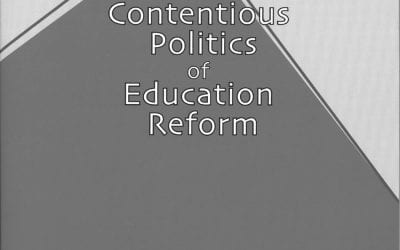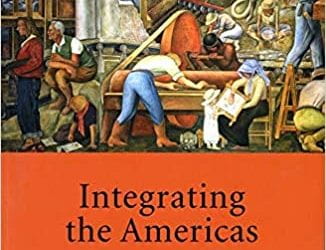When Silence is Gold(en)
The U.S. Global Gag Rule and Reproductive Health in Perú

A typical scene from Peru, a country affected by U.S. restrictions on reproductive health funding. Photo by José Falconi.
As I write this, there’s a crowd protesting, chanting and waving banners, 15 floors below my window here in Lima, Peru. Police in full riot gear encircle protesters and occasionally restrain the 1,000-plus demonstrators voicing their demands in front of the Office of the President’s Cabinet. It’s the third protest this week, one of the innumerable ones I’ve seen since moving here; the three this week were striking government physicians, but there have been strikes this year by all manner of citizens, mostly in response to the unpopular central government. Peruvian television is no different; an assortment of hard-core, fully costumed parody shows exist, ready to make fun of political foibles and flaws. To my North American eyes, accustomed to a more apathetic citizenry, Peru seems to be a veritable kaleidoscope of civic involvement, the epitome of how a democracy should respond when problems surface.
For all the political ruckus and upheaval, however, I’ve been surprised to hear practically nothing about abortion. Illegal in Peru, as it is in much of Latin America, save Puerto Rico and Cuba, clandestine, unsafe abortion in Peru poses a major health risk and a serious burden on the state’s already struggling health system. More than 350,000 clandestine abortions took place in 2003, with about 5%—or 21,000 women—ending up in the hospital for complications. An estimated 800 women died as a result of these clandestine abortions that year. Peru has one of the world’s highest per capita rate of abortions in the world—more than 50 per 100 live births.Therefore, I had expected to hear at least, well, something about abortion on TV, or in the news. I’d certainly seen posters and the occasional talk show on abortion while living in the equally conservative Chile. I had anticipated no different here in Peru, expecting to hear about women’s organizations rallying together to demand that the government liberalize the abortion law, or about Ministry of Health family planning campaigns stressing prevention as a life-saving measure.
Instead, in my seven months here, I’ve heard nary a public word about abortion. A well-publicized, controversial Ministry of Health campaign to include emergency contraception within government health plans was launched earlier this year. the so-called “morning-after” pill is now available, although the Minister of Health was threatened with a libel suit (and several years in prison) for denouncing previous Ministry of Health reports stating that the pill was an abortifacient. Abortions indeed were on the rise, despite the restrictive environment. More than 350,000 abortions occurred in 2003, an increase from the 210,000 seen in 1994, undoubtedly as a result of decreased family planning services and/or outreach and education about unsafe abortion.
However, no one is talking about that. Even the debate about the pill was still several steps removed from the abortion issue itself, a topic that’s rarely touched upon publicly or even privately. I haven’t even heard it discussed among my liberal and educated circle of friends, most of whom are Peruvian or long-term expatriate doctors and researchers. Despite the fact that Peru’s staggering abortion rate requires a significant percentage of health system resources, I know of no one doing projects even vaguely related to abortion. It’s as if no one cares to discuss abortion, an odd apathy despite the statistics and the grim reality. It simply doesn’t fit: in a country so unafraid of protest, where are the Peruvian women’s groups, feminist organizations, or indignant groups of young women to claim their right to safe womanhood?
Of course, these groups—among them, the well-known and respected Movimiento Manuela Ramos, Flora Tristan, and others—are still here, working in Lima and in the provinces to provide women with reproductive healthcare, economic resources, and other development tools. Yet, with the Bush administration, one of the equally vital roles of these organizations, that of advocacy for women’s rights including the right to safe abortion, has been silenced due to the signing of the so-called “Global Gag Rule.”
It was the scrawl heard around the world: on January 22, 2001, Bush signed into the law the Mexico City Policy for U.S. aid which states that any organization receiving US federal funds cannot discuss abortion in any context with its clients. Originally signed into law by former President Reagan while attending a UN conference in Mexico City, the policy is a throw-back to the conservative 80s, and is an ideological rather than practical policy regarding how US-funded organizations maymanage the topic of abortion as an option with clients. Abortions are already prohibited from being paid for with U.S. funds abroad by the anti-choice Helms Amendment. Given that this amendment prevents use of US aid in abortion provision, the Mexico City policy is theoretically a measure that prevents maternal-child health and family planning organizations from promoting abortion to clients or to the general public as a family planning option with U.S. funds. Yet in Latin America, where abortion is largely illegal, the Global Gag Rule has gone beyond the walls of NGOs and clinics to the public fora to limit advocacy and lobbying for abortion rights by these groups as well.
In Peru, the region’s largest recipient of U.S. aid, these effects of the Global Gag Rule to limit advocacy have been felt more strongly. While social conservatism makes any changes in Peru difficult, prior to the institution of the Global Gag Rule in the 1990s, and prior to the reinstatement of the Global Gag Rule, a more open public environment existed toward discussing abortion and how unplanned pregnancies arise and become complicated. According to Susan Chavez of feminist organization Flora Tristan, which refuses to conform to the gag order, this openness led to research on abortion by NGOs and feminist organizations , which helped them to develop and propagate public education campaigns and to open debate about the idea of abortion as a public health issue rather than as a criminal offense.
Now, with half of the organizations gagged because of their dependence on U.S. aid—and the others less-funded and/or isolated from their colleagues—this environment has virtually vanished, making abortion the topic non grata. Those organizations that chose to sign the Global Gag Rule and receive U.S. funds now often struggle to find their way through the potentially dangerous grey areas of the policy to work in the area of abortion rights, should they choose to do so at all. As one feminist organization leader in Peru, speaking confidentially to the Center for Reproductive Rights, said, “We used to hold debates, invited medical doctors, produced research publications. We cannot speak as freely now. No one knows at what point it becomes prohibited speech. USAID told us that we couldn’t lobby for abortion liberalization or decriminalization. That, for example, if we attend a general conference and the issue of abortion comes up we can speak. But we don’t know how much we can talk about it before it crosses over to not being permitted anymore. We, for example, can do research on unsafe abortion. But if we draw conclusions, someone can say ’that’s lobbying.’”
Peruvian citizens working for U.S.-funded organizations were even limited from full, unrestrained involvement in their own country’s legislative process, in an outrageous violation of free speech that would be illegal under the U.S. Constitution. When a constitutional amendment further restricting abortion was proposed in 2003, an NGO leader speaking anonymously said that despite the group’s outspoken pro-choice stance,they could not “…even sign on without colleagues to a public statement on the constitutional clause on abortion. Our silence…surprised Parliament members. The Bishop could speak to the Parliamentarians, but we could not.”
Those not receiving U.S. aid—and thus not under the Global Gag Rule—suffer from isolation from like-minded but gagged colleagues and by the lack of collegial support and critical mass for change. Organizations now speak of being divided in two camps—those who are receiving aid, and thus gagged, and those not. The competition for funds has spawned an atmosphere in which many organizations feel the need to guard self-interests, thus fostering self-censorship. Obviously, the Global Gag Rule has affected Peruvian women’s rights groups’ collective strength in front of conservative anti-choice forces, as Susana Chavez says, on “our advances, our social organizations, our coalitions, our unity.”
Yet the real victims of the Global Gag Rule aren’t the organizations, but rather the more than 350,000 women in Peru who suffered through illegal and frequently unsafe abortions in 2003. The real effects of the Mexico City policy are on the 800 estimated dead, women unable to obtain a legal abortion because of lack of services available to them, as well as the many others whose stories have yet to be part of these statistics.
One can only hope that these stories—and the choice movement of Peru, along with the rest of Latin America—will begin to change as pro-choice advocates do battle in the U.S. Congress to recuperate what has been lost in Peru through less-restricted U.S. aid and through private donors. Given the health effects of illegal abortion in Peru, the effects of the Global Gag Rule, and USAID’s associated “sustainable development” for reproductive health, as it is currently practiced, it is certain that the future reproductive health and status of women in Peru, and likely much of the rest of Latin America, will continue in the future to depend on foreign aid as it has in the past—with all of the ramifications that may entail.
Spring/Summer 2005, Volume IV, Number 2
Tarayn Alessandra Grizzard will receive her MD/MPH-International Health from Harvard in June 2006. Funded by a DRCLAS Overseas Research Grant, she is also a Fulbright Scholar to Peru, where she is the current director of a project on postpartum depression and infant feeding in Lima through the Peruvian NGO PRISMA.
Related Articles
Despite the Odds: The Contentious Politics of Education Reform
In the 1990s, education policy in Latin America cried out for reform. Although literacy rates and access to education in Latin America had risen in previous decades, education reform became…
Landscapes of Devils, Tensions of Place and Memory in the Argentinean Chaco
Gastón R. Gordillo’s portrayal of the Toba aborigines population from the Gran Chaco is a deep and thoughtful insight into the minds of the men and women of that region and the memories…
Integrating the Americas: FTAA and Beyond
oday, two out of five people in Latin America and the Caribbean (LAC) live below the official World Bank poverty line of two dollars per day. Over the last two decades, the number of poor…




